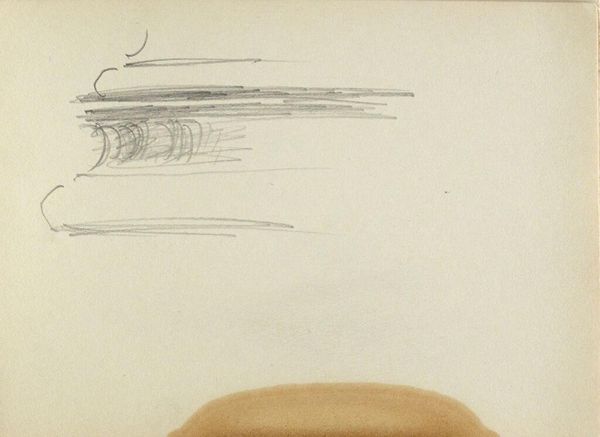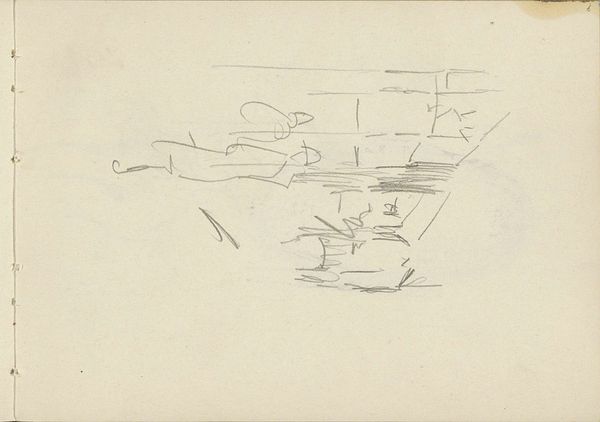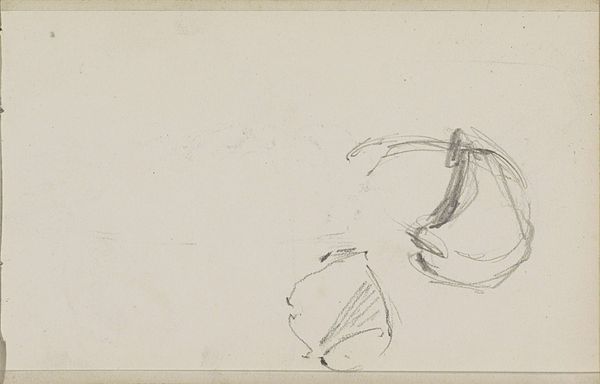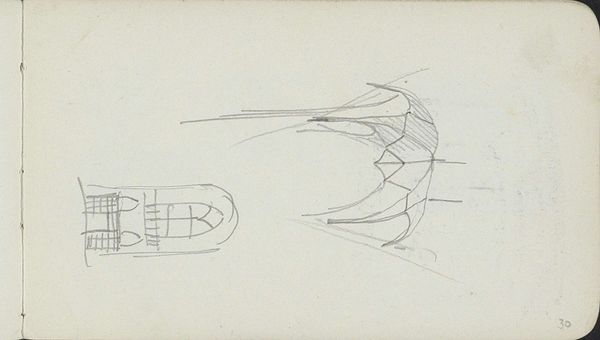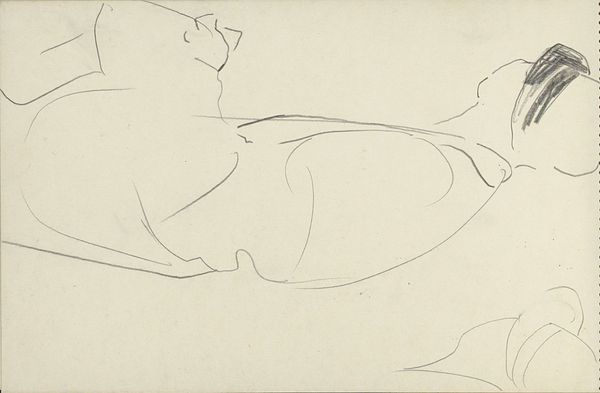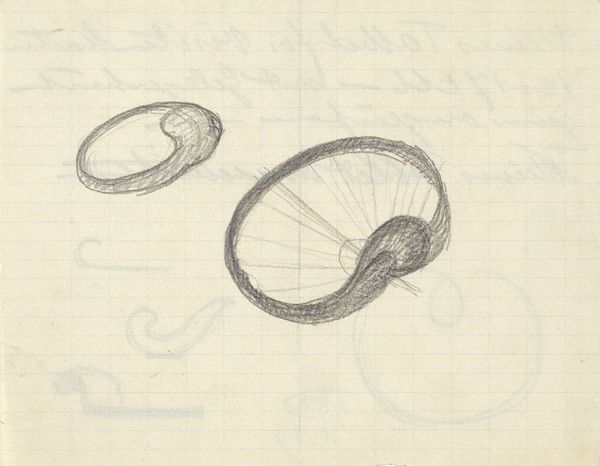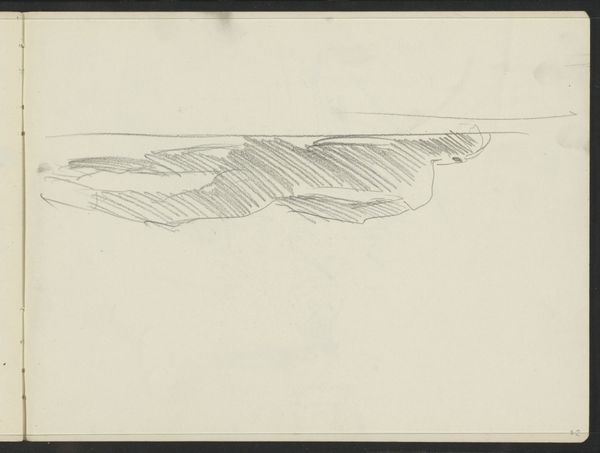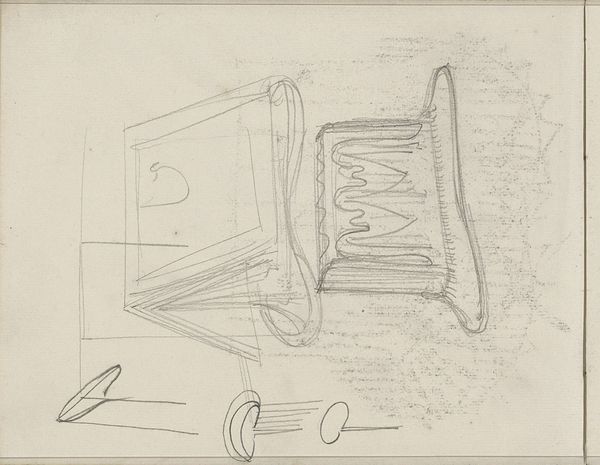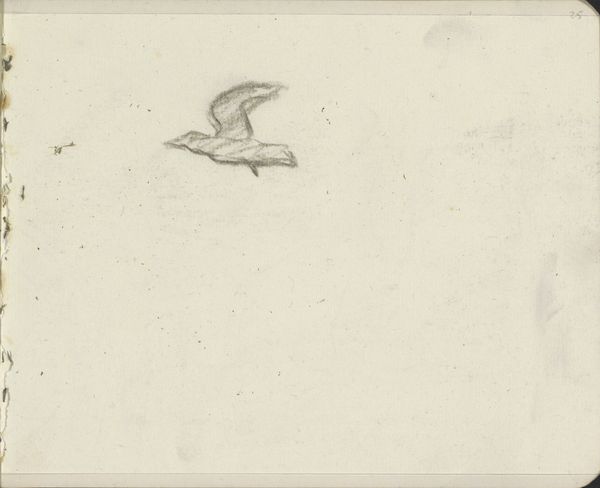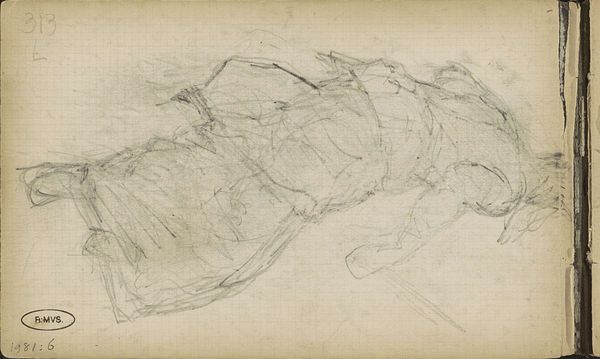
drawing, paper, pencil, graphite
#
drawing
#
paper
#
pencil
#
abstraction
#
graphite
Copyright: Rijks Museum: Open Domain
Curator: Isaac Israels created this work, "Ovaal voorwerp, mogelijk een schilderij," which translates to "Oval Object, possibly a painting," sometime between 1930 and 1934. It's currently held here at the Rijksmuseum. Editor: My initial impression is that it's surprisingly serene for what appears to be merely a preparatory sketch. There's a sense of stillness that is somewhat appealing, despite the bareness of the lines. Curator: The apparent incompleteness might reflect Israels' artistic position. He operated on the fringes of the established art world, focusing on impressions and quick studies rather than highly finished pieces. He exhibited with the Amsterdamse Joffers, resisting the mainstream art institutions of his day, which I always find fascinating. Editor: Structurally, look at the loose quality of the graphite lines creating that central oval form. Notice, too, how the internal crisscrossing hints at texture and three-dimensionality despite being relatively minimal. There's a compelling tension between suggestion and actual depiction. Curator: Do you think that he was working on a portrait? It makes me consider who may have commissioned a portrait by Isaac at that time, what class and political associations may be drawn between subject and author. Editor: The fact that the work remains “possibly a painting” only, offers much scope. Perhaps he was unsure, and yet he allows the possibility for us in his titling of it. I'm quite struck, too, by the shadow. What looks like one single, considered mark suggests both depth and scale with such a simple trick. Curator: It offers a wonderful glimpse into the artist's process. We see it for what it is—the preliminary thinking of a practicing painter rather than an overt symbolic representation. Editor: Precisely, and it reminds us of the beauty inherent in the initial spark of creation. Curator: The drawing, even in its understated way, can generate important questions about the period and its socio-economic milieu. Editor: Absolutely. It serves as an intriguing example of a sketch that transcends its perceived "unfinished" status to offer considerable artistic insight.
Comments
No comments
Be the first to comment and join the conversation on the ultimate creative platform.
